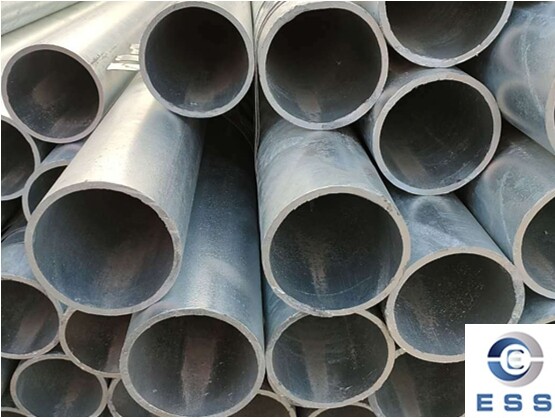
The basic principle of hydraulic
tubes pressing
Hydraulic tube pressing is a processing
method that produces metal cold flow quenching between the hydraulic tube and
the joint. The basic principle of hydraulic tube pressing is that under the
extrusion force of the pressing head, the metal at the end of the hydraulic
tube undergoes plastic deformation, fills the joint groove, and forms a
mechanical lock. During the cold extrusion process, the metal structure
undergoes a quenching effect at the joint, which not only improves the
interface strength but also ensures good sealing. Hydraulic tubes usually use
the seamless
pipe as the base material. The material has good toughness and high tensile
strength. Therefore, they need to be pressed to ensure their safe and reliable
pressure resistance.
Benefits of hydraulic tube pressing
1. Improve pressure resistance
Ensure that the hydraulic tube does not
leak or break under high pressure.
2. Enhance connection reliability
Form a uniform and dense connection between
the pipe and the joint to improve the safety of the overall system.
3. Extend service life
Reasonable pipe pressing can reduce early
wear or damage caused by installation problems.
Tools for hydraulic tube pressing
Hydraulic tube pressing requires the use of
pressing tools. The specifications of the pressing tools are determined by the
outer diameter and thickness of the pipe. The more commonly used tools are:
1. Hydraulic tube pressing machine
Commonly used for pressing large-diameter (≥1″) hydraulic tubes. It is easy to operate
and efficient. Suitable for large-scale processing on industrial production
lines and occasions with high requirements for pressing precision.
2. Manual crimper
Commonly used for pressing small-diameter (≤1″) hydraulic tubes. The price is relatively
economical, but it requires high operating skills and patience. Suitable for
on-site maintenance or small-batch production, as well as occasions with low
equipment investment requirements.
Operation steps for hydraulic tube pressing
1. Select a pressing head of appropriate
size, loosen the pressing port, insert the pressing port into the center hole
of the pressing head, and tighten it with a screw.
2. Align the pressing port with the end of
the hydraulic tube, pinch it tightly at the appropriate position with your
hand, and gradually insert the hydraulic tube into the center hole of the pressing
head.
3. After inserting the hydraulic tube to a
certain depth, quickly clamp the pipe pressing head, start the pipe pressing
machine or rotate the manual pipe pressing device clockwise to perform the pipe
pressing operation.
4. When pressing the pipe, pay attention to
keeping the straight line and the right angle position of the pressing port to
avoid sliding. The lower end of the pressing port falls into the slot to
complete the pipe pressing operation.
Precautions for hydraulic tube pressing
1. When pressing the pipe, lubricant should
be properly processed to avoid excessive friction causing premature wear of the
hydraulic tube
2. The pipe pressing head and the end of
the hydraulic tube must be aligned to avoid deviation during sliding.
3. The pipe pressing depth should be
determined by careful measurement. Too deep or too shallow may cause the
pressure port to break or the hydraulic tube to melt.
FAQ
Q: What should I do if the hydraulic tube
is damaged during the hydraulic tube pressing?
A: During the pipe pressing process, the
technical specifications should be strictly followed to ensure that the pipe
pressing head and the end of the hydraulic tube are aligned. If damage has
occurred, it is recommended to replace the hydraulic tube before pressing the
pipe.
Q: How to judge whether the hydraulic tube
has been tightened?
A: You can observe the contact surface
between the hydraulic tube head and the end of the hydraulic tube. If the
contact surface is uniform and no bubbles are generated, it means that it has
been pressed tightly and can be used normally.
Summary
In short, in practical applications,
hydraulic tube pressing technology is used in many fields. Its sealing and
pressure resistance are crucial in the matching use with valves and other pipe fittings.
Hydraulic tube pressing needs to be combined with the correct process and
professional tools to ensure the installation quality and long-term use
benefits of hydraulic tubes, and provide strong support for the efficiency
improvement and safety of hydraulic systems.
Read more: Pickling treatment process of hydraulic system pipeline













 Eastern Steel Manufacturing Co.,Ltd not only improve product production and sales services, but also provide additional value-added services. As long as you need, we can complete your specific needs together.
Eastern Steel Manufacturing Co.,Ltd not only improve product production and sales services, but also provide additional value-added services. As long as you need, we can complete your specific needs together.










